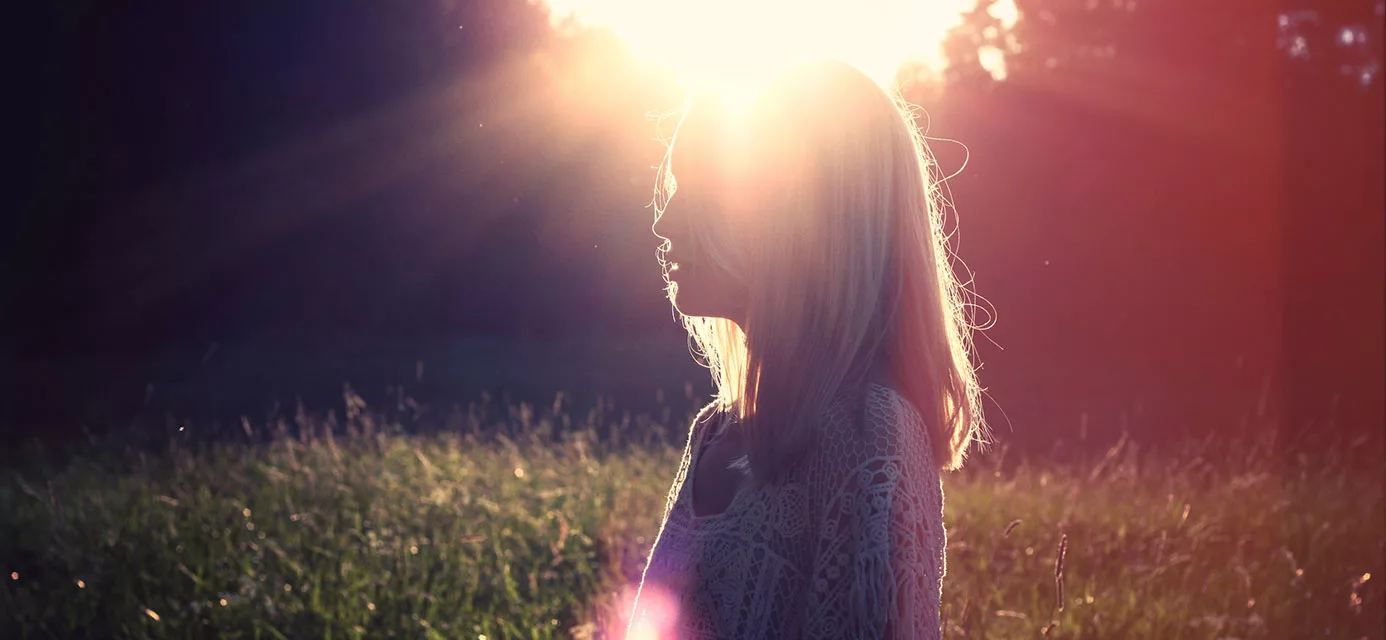Many people of all ages tend to feel a little melancholy as summer gives way to cool nights and shorter days. The so-called “winter blues” are very common. But do you notice those feelings rolling around every year at the same time? Does your teen ask, Why am I always sad in the winter? If so, the problem might be seasonal affective disorder, or SAD.
The American Academy of Family Physicians reports that 4 to 6 percent of people in the United States suffer from winter-onset SAD, while 10 to 20 percent may suffer from a milder form of the disorder. And because SAD usually starts in young adulthood, teenagers and adolescents are at risk. Therefore, it’s important for parents to be aware of whether their teen’s mood changes when the season changes.
Key Takeaways
- Because SAD usually starts in young adulthood, teenagers and adolescents are at risk. Therefore, it’s important for parents to be aware of whether their teen’s mood changes when the season changes.
- SAD symptoms usually continue through the winter and ease up or disappear once the warm weather returns. There is also a form of seasonal affective disorder that comes on during spring and summer.
- Symptoms of teen SAD are similar to the symptoms of other types of depression. Teens may feel hopeless, withdraw from friends and activities, and have trouble sleeping, among other signs.
- Risk factors for SAD include being female, being younger, and having a family member with seasonal depression.
- There are evidence-based treatments for seasonal affective disorder and approaches for seasonal affective disorder self-care.
What Is Seasonal Affective Disorder?
Researchers at the National Institutes of Mental Health first identified SAD in the 1980s. They defined it a type of depression that comes and goes with the seasons, beginning and ending at about the same times every year. Generally, most people who suffer from SAD start feeling symptoms in the fall. SAD symptoms usually continue through the winter and ease up or disappear once the warm weather returns.
Much less common is a version of SAD that comes on in the spring and summer and lasts until fall. Thus, researchers believe that this mood disorder stems from a problem in adapting to one’s physical environment.
Young people who suffer from SAD, also called seasonal depression, typically do not experience depression at other times of the year. However, they do go through the same seasonal pattern of depressive symptoms over a number of years.
Is SAD Real?
Some researchers question whether the data supports the existence of seasonal affective disorder. In a 2016 study using data collected from the Centers for Disease Control, scientists were not able to find a link between depression scores and hours of sunlight on the day a score was collected. However, these findings don’t negate the experience of millions of people, or the evidence that lack of light has a negative impact on mental health.
Symptoms of SAD
To determine whether a teen is suffering from SAD, healthcare or mental health professionals typically administer a physical exam and a psychological evaluation. In addition, lab tests may also be helpful in order to discover whether a thyroid issue or other medical problem may be a contributing factor.
Symptoms of teen SAD are similar to the symptoms of other types of depression:
- Feelings of sadness most of the day, every day
- A sense of hopelessness
- Low energy
- Loss of interest in activities that were once enjoyable
- Sleeping problems (too much or too little)
- Changes in appetite or weight
- Sluggishness
- Difficulty concentrating
- Frequent thoughts of death or suicide.
Fall and Winter SAD
There are also symptoms that are specific to winter-onset SAD, also called winter depression. Additional winter blues signs include:
- Irritability
- Tiredness or low energy
- Finding it challenging to get along with other people
- Extra sensitive to rejection
- Heavy feeling in the arms or legs
- Oversleeping
- Cravings for foods high in carbohydrates
- Weight gain
Spring and Summer SAD
Symptoms specific to summer-onset SAD, also called summer depression, may include the following:
- Feelings of sadness and depression
- Insomnia
- Weight loss
- Poor appetite
- Agitation or anxiety
- Episodes of violent behavior.
Severe consequences of SAD can also include suicidal thoughts or behavior, withdrawing from social activities and relationships, difficulty functioning at work or school, and substance abuse.

What Causes SAD?
There are a number of different factors that contribute to seasonal affective disorder in adolescents. Both serotonin and melatonin levels can affect the likelihood of being diagnosed with SAD.
Disturbed circadian rhythms: The decrease in sunlight that comes with the end of summer can disrupt the body’s circadian rhythms, or internal clock, leading to feelings of depression.
Low serotonin levels: Serotonin is one of the primary neurotransmitters that affect mood. Reduced sunlight in the fall and winter can cause a drop in serotonin that may trigger symptoms of depression.
Increased melatonin levels: The change in season can disrupt the balance of melatonin, which plays a role in sleep patterns and mood. Darkness increases the body’s production of melatonin. Therefore, people with SAD tend to feel sleepy and sluggish.
Vitamin D deficiency: Lack of Vitamin D has been linked to significant depression symptoms. Since much of our vitamin D comes from the sun, the darker winter months can create a vitamin D deficiency, causing depression symptoms.
Risk Factors for SAD
People with any of the following characteristics may be at higher risk of experiencing SAD.
- Being female. Three-quarters of people diagnosed with SAD are female. However, men may have more severe symptoms.
- Younger age. Young people have a higher risk of winter SAD. The risk of getting SAD for the first time decreases as a person ages. That means teen SAD is more common than it is in adults.
- Family members with SAD. A family history of SAD or another type of depression may increase the likelihood of having the disorder.
- A clinical depression or bipolar disorder diagnosis. A person who is suffering from depression or bipolar disorder may experience seasonal shifts in their symptoms of depression.
- Living farther from the equator. SAD is more common among people who live far north or far south of the equator. Consequently, they experience decreased sunlight during the winter and longer days during the summer months.
How to Treat Seasonal Depression
There are various treatments for seasonal depressive disorder that have been shown to be effective. While light therapy is the most common approach, cognitive behavioral therapy is also particularly helpful.
Light therapy, also known as phototherapy
With phototherapy, a teen sits in front of a light box or lamp that mimics natural light, typically first thing in the morning from early fall through spring. Therefore, the bright light triggers chemicals in the brain that help regulate mood. In a key study, researchers determined that light therapy had an antidepressant impact, but it took three weeks for a significant effect to develop.
Generally, light treatment requires 20-60 minutes of exposure to 10,000 lux of cool-white fluorescent light. However, it’s important to know that light therapy can have side effects, such as eye strain, headaches, irritability, fatigue, and insomnia. It’s also important to make sure the light box is safe and meets the required standards.
Psychotherapy
Cognitive Behavioral Therapy (CBT) teaches teens how to identify and change the negative thoughts and behaviors that contribute to feeling depressed. Thus, it is particularly effective for coping with teen SAD symptoms. A 2016 study showed that CBT was more effective than light therapy in relieving SAD. Moreover, learning healthy ways to manage stress and cope with the symptoms of SAD can also make a positive difference.
Seasonal Affective Disorder Medication
Some people with SAD benefit from antidepressant medications, especially if their symptoms are severe.

10 Tips for How to Cope with Seasonal Depression
With seasonal affective disorder, self-care is essential. Here are a few tips for staving off the “winter blues” and increasing your family’s and your teen’s resilience against SAD.
1. Spend time outdoors.
Even when it’s cold outside, getting sunshine on your face can help reduce the severity of the winter blues. In addition, research shows that spending time in nature reduces anxiety and depressive thoughts. Get the whole family outside as often as possible.
2. Get moving.
Regular exercise improves well-being, self-confidence, and positive outlook. It also increases serotonin levels—which is particularly important since one cause of SAD is decreased serotonin. Outdoor exercise has added benefits (see #1). Encourage your teen to get involved with winter sports or a hiking club.
3. Meditate and do yoga.
Yoga relieves stress and calms the nervous system. In a study of 47 high school students, participants reported significantly greater decreases in anger, depression, and fatigue from before to after participating in yoga compared to PE. Moreover, a Johns Hopkins study found that meditation had the same impact on anxiety and depression as antidepressants did. The family can do these practices together to get the added benefit of bonding.
4. Connect with others.
Hibernation might be a natural reaction to the cold months, but it’s not usually good for you. Multiple studies have shown that social relationships improve mental and physical health. If your teen tends to withdraw in their room during the cold weather, try these approaches for getting them out and connecting with others.
5. Stop and smell the roses (or the poplars).
Aromatherapy can influence the area of the brain responsible for controlling mood. Scent can also help regulate the body’s internal clock, which helps control sleep and appetite. Buy flowers for the house, or gift your teen (and yourself) a bottle of rosewater or another essential oil to keep in their pocket or on their desk. In a 2015 study published in the Journal of Natural Medicines, essential oils from the poplar tree were found to be particularly helpful for depression.
6. Keep a journal.
Translating thoughts and feelings into written words offers a host of benefits that support mental health. Writing about what you’re grateful for is a particular powerful intervention. Keeping a gratitude journal can help teens focus on the things they appreciate about winter.
7. Use food as medicine.
Food can be a powerful vehicle for healing. Nutrients such as omega-3 fatty acids, folic acid, and vitamin D have been shown to help fight symptoms of depression.
Read “Food and Mood: Teen Nutrition and Mental Health.”
8. Get out of town.
If you’re able, schedule a vacation for the family in a sunny and warm location. If you can’t go that far, plan a getaway to a place you’ve never been before, even if it’s only a few hours away. Seeing new things can help jog your teen out of their usual routine and give them more energy.
9. Bring light into your family’s life.
Even when you’re staying warm indoors, take in as much light as you can. Open the curtains and blinds, and move chairs closer to bright windows to encourage sitting in the sunshine. Remind teens to open their window shades and consider purchasing a light box for their room.
10. Remind your teen that spring will return.
Remembering that it’s temporary can help ease the winter blues. However, SAD is more than just the winter blues. Therefore, don’t hesitate to reach out for help for your teen. With the support of a compassionate mental health professional, they can start feeling better during the cold season and in every season.
Treatment for Seasonal Depression at Newport Academy
If your adolescent is struggling with seasonal depression or another form of depression, help is available. At Newport Academy, our approach to depression treatment addresses underlying causes, such as trauma, low self-esteem, and attachment issues.
In addition, our outcomes-driven care provides young people with healthy coping mechanisms and helps them reframe negative thinking toward hopeful and self-compassionate thoughts and feelings. Contact us today to learn more about our clinical model and start making a positive difference in your teen’s mental health and your family’s well-being.
Frequently Asked Questions
Yes, adolescents and young adults are at a higher risk of SAD than older adults.
Changes in appetite and loss of interest in activities that were once enjoyable are two common signs of SAD.
Boosting your levels of vitamin D can help combat seasonal affective disorder. However, people with SAD should also be assessed and treated by a mental health professional.
Light therapy using a light box and Cognitive Behavioral Therapy are two of the most effective treatments for seasonal affective disorder.
Usually SAD kicks in around the time of the fall time change, or whenever the days become shorter and the weather gets colder.
Sources
American Journal of Psychiatr. 2016 Mar; 173(3): 244-251.
Clinical Psychological Science. 2016 Jan;4(5): 825-834.
Proceedings National Academy Sci. 2015 Jul; 112(28): 8567–8572.
Contemp School Psychol. 2015; 19: 184.
JAMA Intern Med. 2014; 174(3): 357-368.
J Health Soc Behav. 2010; 51(Suppl): S54–S66.






